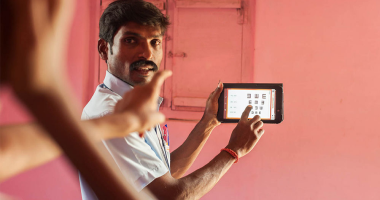The Hidden Dangers of Diabetic Retinopathy: Protecting Your Vision from Eye Problems
Diabetic Retinopathy is one of the most serious eye problems affecting individuals with diabetes. It occurs due to prolonged high blood sugar levels, which damage the tiny blood vessels in the retina, leading to vision impairment or even blindness if left untreated. This condition is a leading cause of blindness worldwide, making early detection and treatment essential.

Stages of Diabetic Retinopathy
Diabetic Retinopathy progresses in four stages:
Mild Nonproliferative Retinopathy – This is the earliest stage where small areas of swelling, known as microaneurysms, appear in the retina’s blood vessels. These may leak fluid, causing minimal or no noticeable symptoms.
Moderate Nonproliferative Retinopathy – As the disease advances, blood flow to the retina becomes restricted, leading to an increased risk of fluid buildup and further damage.
Severe Nonproliferative Retinopathy – More blood vessels become blocked, signaling the retina to develop new, abnormal blood vessels. This stage significantly raises the risk of vision loss.
Proliferative Diabetic Retinopathy (PDR) – The most advanced stage, where abnormal new blood vessels form, which can leak blood into the vitreous (the gel-like substance in the eye). This can lead to severe eye problems, including retinal detachment and complete vision loss.
Symptoms of Diabetic Retinopathy
Diabetic Retinopathy Eye Problems often develops silently without noticeable symptoms in its early stages. As the condition worsens, individuals may experience:
Blurred or distorted vision
Dark spots or floaters
Difficulty seeing at night
Sudden vision loss
Recognizing these symptoms early and seeking medical attention can help prevent severe eye problems.

Risk Factors for Diabetic Retinopathy
Several factors contribute to the development of Diabetic Retinopathy, including:
Uncontrolled blood sugar levels
High blood pressure
High cholesterol
Prolonged duration of diabetes
Smoking
Managing these risk factors can slow down the progression of the disease and reduce the chances of experiencing serious eye problems.
Diagnosis and Treatment Options
Early detection of Diabetic Retinopathy is crucial for effective management. Eye specialists use diagnostic methods such as:
Dilated Eye Exam – Drops are used to widen the pupil, allowing doctors to examine the retina closely.
Optical Coherence Tomography (OCT) – A detailed imaging test to detect retinal swelling.
Fluorescein Angiography – A dye is injected into the bloodstream to highlight damaged blood vessels in the retina.
Treatment options vary based on the severity of the disease:
Laser Therapy (Photocoagulation) – Helps to seal leaking blood vessels and prevent further damage.
Anti-VEGF Injections – Medications like ranibizumab and aflibercept help to reduce abnormal blood vessel growth and swelling.
Vitrectomy – A surgical procedure to remove blood and scar tissue from the eye in severe cases.
Preventing Diabetic Retinopathy
While treatment can help manage the condition, prevention is the best approach. Individuals with diabetes should:
Maintain stable blood sugar levels
Monitor blood pressure and cholesterol
Have regular eye checkups
Adopt a healthy lifestyle with a balanced diet and regular exercise
Avoid smoking and excessive alcohol consumption

Conclusion
Diabetic Retinopathy is a serious diabetes-related eye problem that can lead to vision loss if not addressed in time. Regular eye examinations, early detection, and effective management can prevent severe complications. By taking proactive steps, individuals can safeguard their vision and maintain overall eye health despite living with diabetes.



Comments
Post a Comment